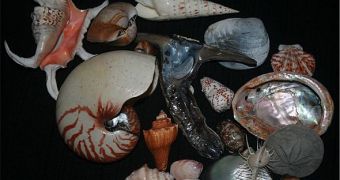One of the most harmful things associated with global warming and climate change is the fact that the large amounts of carbon dioxide in the atmosphere exceed the ocean's ability to safely store them. This means that the waters will continue to capture CO2, but that the resulting carbonic acid is significantly changing the chemical composition of the oceans, making it more difficult for marine animals to endure. As a direct consequence, some creatures have begun to develop thicker shells.
Scientists were very amazed to learn that this was the case. Basic chemistry and biology dictated that the shells should become thinner as the level of oceanic acidification increased, but it turned out that nature had something else in store for its ocean-based dwellers, LiveScience reports. Whenever exposed to elevated amounts of carbonic acid, animals such as crabs, shrimp and lobsters appear to start constructing larger shells, rather than thinner and brittle ones.
An additional effect of the acid is the fact that it reduces the amount of carbonate ions available in seawater. These compounds are among the primary sources of raw materials that crustaceans use to build their mobile homes. A lot of animals build either their shells or their skeletons from calcium carbonate, which is produced in association with these ions. The new research focused on 18 creatures that were supposed to be influenced by this acidification process. The scientists determined that seven of them were actually growing a larger shell, whereas the rest were, indeed, suffering the ill effects of carbonic acid.
According to a theory, it may be that the amount of dissolved inorganic carbon may have actually increased for these creatures, in spite of the larger amount of acid currently in the world's oceans. “Most likely the organisms that responded positively were somehow able to manipulate dissolved inorganic carbon in the fluid from which they precipitated their skeleton in a way that was beneficial to them. They were somehow able to manipulate CO2 to build their skeletons,” University of North Carolina Assistant Professor in Marine Sciences Justin B. Ries explains. He formerly worked at the Woods Hole Oceanographic Institution.
“We were surprised that some organisms didn’t behave in the way we expected under elevated CO2. What was really interesting was that some of the creatures, the coral, the hard clam and the lobster, for example, didn’t seem to care about CO2 until it was higher than about 1,000 parts per million [ppm],” WHOI researcher Anne L. Cohen adds. She is also one of the coauthors of a new scientific paper detailing the finds, which appears in the December 1 issue of the respected journal Geology.

 14 DAY TRIAL //
14 DAY TRIAL //